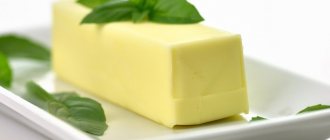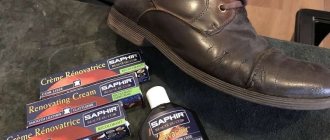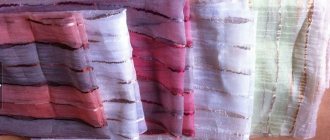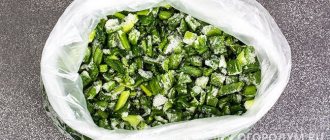After driving through deep ice holes, I was haunted by the thought that in my bridges it was not a transmission but jelly, yogurt made from water and oil, but at the same time there was no extra 3 rubles for 3 liters of normal oil. Yes, and the toad was choking after 6000 thousand mileage, but what if everything is ok, and I’m just wasting water in vain. I decided to monitor the Internet on the topic of whether it is possible to remove water from the oil and pour this resurrected miracle back into the bridges. The idea turned out to be not new, but most of the solutions are quite messy or expensive to implement, except for one. I'll tell you about him. Its name is Freezing settled water from oil. It's simple - drain the spoiled oil, let it settle, more is better. The water will go down, the oil will rise to the top. We put this thing in the freezer overnight, in the morning we pour the thick, purified oil into a container, and throw away the ice from the frozen water, that’s it, profit. And if we drain it through a fine filter, then, in theory, what did not settle, but remained in the oil, for the most part will remain on this mesh in a solid but rapidly melting state, so time matters here. We've read it, now let's try it.
We will need a 12mm hexagon for plugs in bridges, a convenient container, a funnel with a filter mesh, a syringe for filling oil (for a homeless person you can use at least 20 ml, but then you need to dial it in and give it about 140 times, I had 100, you will need to repeat the operation about 29 times) and a liter of any oil with the characteristics declared by the factory for topping up (I took the option from TNK for 450 rubles, since the oil won’t be perfect anyway, so you won’t really spoil it). Looking ahead, I’ll say that from the kind of oil that was pouring into the light, it was clear that if there was water there, it was so little that I wouldn’t freeze a damn thing out.
Yes, it’s darker from the back than from the front, but there are no silver or pink shades, much less yoghurtiness in sight, you can just see that it worked, you can fill in a liter of new oil, spreading it in the proportion of 2/3 back 1/3 forward, and the rest is that they leaked. I still let it sit for 8 hours, but since there was nothing, nothing sank to the bottom, no color changed underneath, no signs of water. Well, maybe some guano has gone down to the bottom, so it’s still not superfluous, I think.
The refreshed oil returned to the bridges, leaving about a liter of replaced residues from the drained waste. Although I was glad that there was nothing critical, the thought that the experiment was not completed did not give me peace. Therefore. We take a convenient container left over from the new oil, pour the waste oil into it and add about 15% of the volume of the filled oil with tap water into the bottle (well, like after a harsh standing on the water)
I honestly then walked around and shook this thing for about five minutes, so that everything would mix for sure, as would happen in bridges. Closed the lid and left to settle overnight. In the morning, I carefully moved the “test tube” into the freezer of the refrigerator and gave it 4 hours to freeze.
Then, at a brisk pace, I took the experimental composition out of the cold and began to pour it through a funnel with a mesh into another container. So, the oil has drained, but where is the ice? On the ball, I hit the floor with a bottle and lo and behold, there was actually ice there, and a lot of it, it couldn’t fit through the neck. Knowing that time was not on my side, I applied the ax several times and released the ice out, and small pieces, by the way, also remained on the mesh of the funnel, there weren’t many of them, but still.
There are all sorts of situations that happen in life: for example, vegetable oil is mixed with water, or liquid gets into the engine. Separating oil from water with your own hands is easy and simple: remember the school chemistry course, stock up on filters, tubes and absorbent agents.
How does water get into the engine?
Water may enter the engine as a result of flooding in the engine compartment. Water, entering the vehicle's crankcase, begins to mix with the engine oil entering the BC and to the engine cylinder head through the lines of the internal combustion engine lubrication system.
Interesting materials:
How to remove the label from a closed bottle of champagne? How to fillet a duck? How to remove tile adhesive from floor? How to remove a circle from an angle grinder with a key? How to remove the cover of ZTE Blade a610? How to remove a sticker from a windshield? How to remove oxides from stainless steel? How to remove film from a wooden door? How to deregister a motorcycle after sale? How to remove a drill bit from an impact drill?
The essence of the mixture
These two liquids do not mix with each other. From a school chemistry course, many will remember that the combination of water and fats is called an emulsion. Additives are always required for the diffusion of substances - they are called emulsifiers.
When mixed with water, the oil layer appears on top, since it is a lighter substance. Due to its greater density, water sinks. Separating the two products is not difficult.
What to do with motor oil
Disposing of used oil isn't always a smart idea, since it can be converted into cheap fuel for an oil furnace, a preservative for wood surfaces, or a lubricant for various equipment.
How to clean engine oil, all options:
- Let the mixture sit and then pour off the top layer.
- Stir thoroughly or use a centrifuge, then drain or suck out the top oily layer.
- Pass the emulsion through a filter: gauze, newspaper, etc.
- You can also use a demulsifier.
Everything in the household will come in handy, so don’t rush to get rid of oil spoiled by water.
The invention relates to the oil industry and can be used to remove water from motor and other oils. To dehydrate watered motor oils, oil heated to 65-70 o C is centrifuged on a disc separator and then the oil collected in an open tank is again heated to a temperature of 100-108 o C until the specified water content in the oil is achieved. The proposed method is much simpler and more effective than the known ones. 1 ill.
The invention relates to the oil refining industry and can be used for dehydration of watered motor oils containing additives, as well as other oils.
There is a known method for dehydrating oils by settling water while heating the oil to 80 o C (Rules for the technical operation of oil depots. - M.: Nedra, 1986; Auth. St. USSR N 1260387, class C 10 G 33/06, 1988). As a result of sedimentation, the water settles and then drains from the tank through the bottom drain pipe.
The disadvantages of this method are the following.
Dissolved water in oil, which is in the oil in a monomolecular state, cannot be removed.
Emulsified water in oil, formed as a result of condensation of released water dissolved in oil when the temperature decreases, as well as as a result of mechanical crushing of settling water in pumps, having a particle size of several microns or less, is also practically not removed. Additives are added to mineral and synthetic oils in order to improve or preserve their performance properties for a long time - viscosity, depressant, anti-corrosion, anti-oxidation, detergent, anti-wear and others. The total amount of additives contained in the oil, depending on its brand, reaches 5-7% or more.
For example, the composition of M-8V oil according to the data contains the following composition of additives: 4% VNII NP-360, 2% PMS, 0.9% DF-11, 1-1.5% AFK and 0.003% PMS-200A (Commercial petroleum products , their properties and application. Handbook. Edited by N. G. Puchkov. - M.: Chemistry, 1971). The total additive content is from 7.9 to 8.4%. Some of the additives are water soluble, others are typical surfactants for oil sump systems. In the presence of water in oil, the formation of colloidal systems, hydration of additives, and the formation of micelles consisting of water, additives and oil occur.
Water bound in this way acquires properties different from free water, and it is impossible to remove it by settling. At the same time, the amount of bound water in the oil can be superior compared to emulsion and free water.
How to split
Sunflower oil is collected in the upper part of the container. If you act carefully, most of the product can be drained or scooped out without special tools. Pass the remaining emulsion through a filter. The output will be clean water without an oily film.
The freezer method plays on the difference in freezing temperatures of products:
- Place the container with the mixture in the freezer.
- Water begins to transform into ice at zero. The temperature for vegetable oil to solidify is lower than that of water.
- After some time, pieces of ice will float in the liquid oil. They are very easy to remove.
Drain the water using a rubber straw:
- Secure the tube to a bowl with water and oil, lower the end to the very bottom.
- Prepare a container for water, intermediate mixture and oil; it should be half the size.
- Suck the air out of the tube and lower its other end into a clean container.
- The distillation of water will begin immediately.
- When the intermediate substance comes out and the oil flows out, transfer the tube to the appropriate container.
If you need to remove oil from water, use an absorbent substance. At home - an activated carbon tablet. Calculate the amount of agent using the formula: 3 parts to 1 part oil. How to proceed:
- Immerse the absorbent agent into the mixture.
- Close the container and shake vigorously.
- Pour the mixture into a new bowl a couple of times, as an oily layer remains on the walls.
Advice from Miss Clean magazine If the vegetable oil looks liquid and watery, and during the cooking process it does not fry, but stews, most likely it was diluted not with water, but with another low-quality vegetable product. Water in the product is immediately visible.
Methods for checking oil quality
The characteristics of transformer oil are determined by one of 3 available methods. The test can be complete or shortened, and the electrical strength of the liquid can also be determined. If the oil was received by the customer from the manufacturer, it must be fully checked before being poured into the equipment. If the customer receives a transformer with oil already filled, then the liquid is checked using a shortened procedure.
High-quality oil must meet breakdown standards. Otherwise, such material should be dried. The recovered oil can be used again in equipment.
Combined methods
From the information given above, it becomes clear that cleaning used oil using only one method in most cases does not lead to the expected result. In practice, a combination of methods has to be used.
GlobeCore is engaged in the purification and regeneration of various mineral oils using both classical and innovative approaches. This philosophy allows us to restore the performance properties of oils to the highest possible level, which saves money. Now you don’t need to spend money on buying a new product to replace it: after regeneration, the oil can continue to perform its functions.
The environmental aspect is of particular importance in our time. GlobeCore processes do not cause any environmental pollution. The adsorbents used are reactivated and can be used for 2-3 years.
GlobeCore knows how to turn seemingly hopeless waste into guaranteed profit!
During periods of crisis, issues of saving raw materials, recycling resources, and restoring worn-out mechanisms and materials become acute issues.
The production of crude oil, the main raw material for the production of motor oils, is growing year after year. Only the flagship of the global oil and gas industry, Exxon Mobil, which owns 38 oil refineries in 21 countries, processes 6.3 million barrels of crude oil every day.
Consumption of motor oils in the world is approximately 60 million tons of equivalent fuel. And there is data on only a quarter of this amount, reporting that after the resource was used up, the oil was reused, processed or burned.
The statistics in our country are even sadder. During the year, about 1.7 million tons of various waste oils (WO) are collected on the territory of the Russian Federation. In this case, up to 0.25 million tons, or 15%, are processed, which is 3.3% of total consumption.
For comparison: in Germany, which ranks first in Europe in the purification of oil, about 55% of the total volume of fresh oils consumed is collected and used. German environmental legislation obliges oil producers whose production facilities are located in Germany to add at least 10% of so-called refining base oil to their oils. In some European countries, there is a procedure where when handing over used oil, the person giving it away receives fresh oil at a discount.
The need to collect and process OM is evidenced by the fact that from approximately 100 tons of oil, only 10 tons of motor oil are obtained, and when processing 100 tons of OM, more than 80 tons of ready-to-use product can be obtained.
Work after water purification
After the bulk of the oil has been collected and disposed of, it is necessary to perform a control cleaning of the well. It is practically no different from preventive cleaning, but with some nuances. All water is not pumped out immediately, but gradually with constant washing of the walls. After pumping, an inspection of all joints, seams and the integrity of the concrete rings is carried out. If necessary, old seams are cleaned and sealed again. The well is allowed to fill to its normal level and the presence of oil stains is visually examined.
The process of cleaning a well from oil stains is painstaking even for professionals!
The cleaning process is completed by natural flushing with influent water, therefore, the more often water is drawn in, the faster the source will return to normal. It is worth considering that if the entire aquifer is contaminated, then complete cleaning is a long process, during which the water in the well will be undrinkable.
An unpleasant situation, when the water in the well was clean yesterday, but today an oily film has appeared on the surface, completely paralyzes home plumbing and farming. It should not be eaten or watered. To solve the problem, you need to determine where the oil came from in the well and develop a strategy for collecting it and cleaning the entire structure. This is probably the most labor-intensive process; it is almost impossible to completely collect the oil from the surface of the water.
Efficiency of cleaning measures
The ingress of a small amount of oil and the prompt action to neutralize it provide a 100% result in cleaning the well. If possible, you should pay attention to the composition of the oil. As it passes into the aquifer, it is broken into fractions, some easier to remove, others more difficult.
A small example from life: an oil film was discovered in a well, the owner did not call a team from the company servicing the wells, but went to get advice on the Internet. A few days later the film disappeared. Science has proven that not a single substance appears from nothing and disappears into nowhere. The oil just started to disintegrate and remained in the water. Its presence can only be detected by extensive chemical testing of water samples.
After completing the cleaning and good water tests, you need to flush the water supply. Household appliances (boiler, washing machine) will have to be washed thoroughly.
Oil in the well - reasons
If there is a pump, then there could be a leak. It contains about a glass of oil. It is enough to cover the mirror with film. In practice, there were cases when the pump broke down at the stage of pumping the well. Therefore, if it stops working, you need to immediately turn it off and remove it before all the oil leaks out. Oil stains also appear from the installation of reinforced concrete rings for industrial use with traces of lubricants. They are cheaper, there is a temptation to save money, but you have to pay many times over.
A conventional submersible pump can cause oil to appear in the well
The worst option is an oil spill nearby and its infiltration into the aquifer. Together with groundwater, they gradually flow to greater depths. This kind of pollution is considered the most severe, practically irremovable. To obtain good drinking water, you will have to install a water treatment system or look for a replacement source. In the event of a global “oil” problem, drilling and constructing an artesian well will save the day.
According to sanitary standards, drinking water should not contain any impurities of petroleum products. Only traces of them are allowed to be found. Perceptible organoleptic indicator for humans is about 5-10 ml
Oil film does not only come from petroleum products. Fatty fractions are present in ordinary household waste, which flows into cesspools. It is quite possible that your own or a neighbor’s septic tank is leaking and the waste has reached the well. The water can bring oil if the waterproofing has not been repaired for a long time.
In wells that are used seasonally, a film on the surface of the water is formed due to the proliferation of colonies of pathogenic purulent sticks. A simple analysis at the city sanitary-epidemiological station will help to identify them and develop measures to disinfect the source. Normally there should be no bacteria in the water. The human factor does not account for much, but it is not discounted either. An oil can might have fallen into the well, or the child might have dropped something but was afraid to tell his parents.
Fatty water with an oily film can appear not only in the well, but also in the well, from where it is problematic to remove it. You have to pump the well with solutions of special sorbents. Oil gets there from equipment, lubricating pipe threads. The fatty effect is created by a high concentration of iron.











